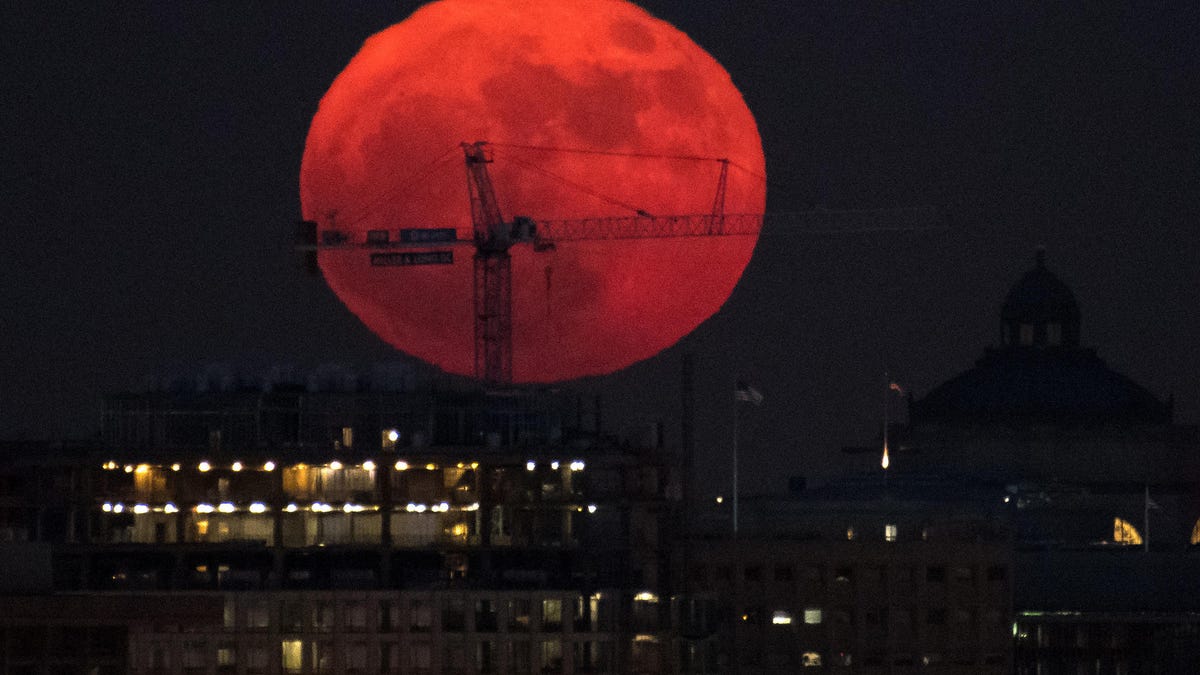Immortalize the super blue blood moon with these photo tips
It's a once in a lifetime lunar occurrence that can live forever in pixels, if you prepare and know what you're doing.
The rare celestial sight of a super blue blood moon will move across the early morning sky Jan. 31, sending both professional and amateur shutterbugs reaching for their cameras.
In case you aren't in the know, a supermoon occurs when the moon is at perigee, or the closest point to us during its orbit of Earth. They typically occur a few times a year, and the last one was Jan. 1. The "blood" bit refers to the reddish tinge our satellite takes on during a total lunar eclipse.
There will be no blue hue to the moon, that's just a colloquial name used to reference the second full moon in a single calendar month.
So basically, the draw for photographers is to catch the relatively rare sight of the moon wearing a bit of rouge and appearing up to 15 percent larger in the sky than usual. The blue moon part won't show up in photos and has no real scientific significance, but at least you get bragging rights for capturing the conjunction of three rare happenings.
Getting that perfect shot of the event to share for posterity or your Instagram followers can be a little tricky, though.
"Capturing anything in the night sky is confusing to your camera, so there is an element of trial and error," said Bryan O'Neil Hughes, director of product management and outreach for Adobe's Creative Cloud. "There are, however, a series of tips that will assure the best image regardless."
Adobe shared some of Hughes' top pointers for getting a fantastic supermoon shot, which start with getting a tripod or some other way to stabilize your camera. This will assure the sharpest image possible. If it's windy where you're shooting, you may also need to block that breeze, which can often be accomplished by simply standing in just the right spot. Also, if possible, trigger your shutter remotely or with a timer.
If you have advanced photo skills or plan to edit your images, Hughes suggests finding a spot to shoot with minimal light pollution and saving shots as raw files. If your camera has manual controls, use an ISO setting under 1,600 with the shutter nearly or completely wide open.
"Consider shooting in Manual mode; you're looking for detail in the moon and a dark sky," Hughes said. "The latter is easy to control in editing, but if you lose the highlight information, there isn't too much that can be done in post."
Not surprisingly, Hughes also suggests using an image editing program like Adobe's Lightroom CC to make those pics really pop. You can find tutorials for cropping, adjusting light and color and adding other effects and improvements that provide a nice sense of what's possible.
If you come up with any great shots this week, be sure to share them with me via Twitter @EricCMack. We love to feature our readers' photos in our supermoon galleries.
Crowd Control: A crowdsourced science fiction novel written by CNET readers.
Solving for XX: The tech industry seeks to overcome outdated ideas about "women in tech."


